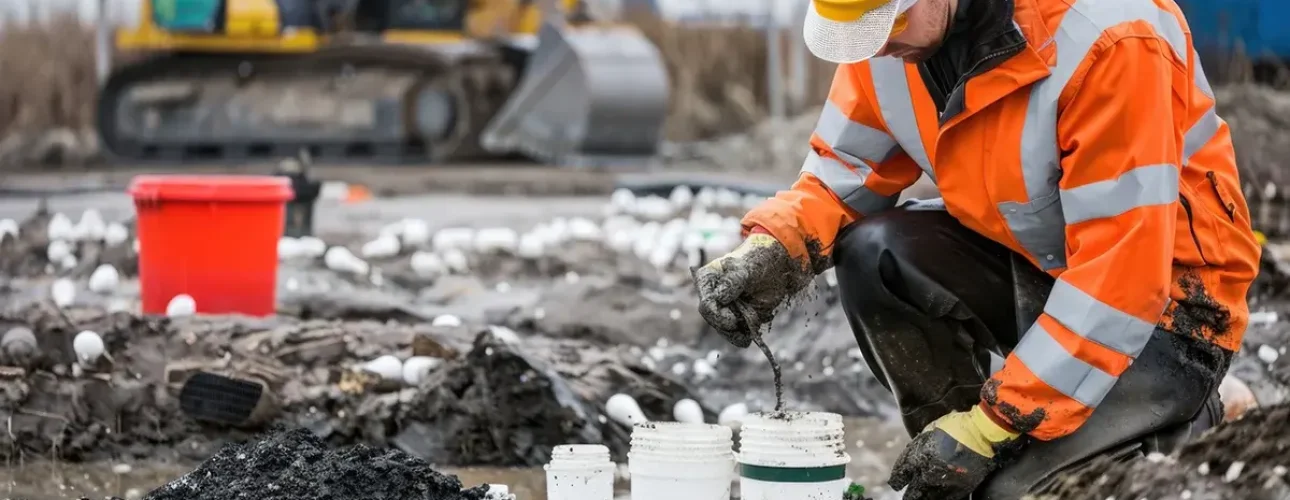In the intricate dance of land development and property transactions, the ground beneath our feet often holds secrets – stories etched in soil and whispered through groundwater. These narratives, sometimes benign and sometimes complex, can significantly impact the viability, cost, and future of any project. This is where the critical process of an Environmental Site Assessment (ESA) comes into play, acting as a vital tool to “unearth potential” – both the opportunities and the challenges hidden within a property’s environmental history. At Anderson Engineering, we understand that a thorough ESA isn’t just a regulatory hurdle; it’s a cornerstone of responsible and successful development.
An ESA is essentially a comprehensive investigation into the environmental conditions of a property. Its primary goal is to identify potential or existing environmental contamination liabilities. Think of it as a deep dive into a property’s past and present, scrutinizing activities that could have led to the release of hazardous substances into the soil, groundwater, or even the air. This process isn’t a one-size-fits-all endeavor; rather, it’s a tiered approach, with each phase building upon the findings of the previous one.
Phase I ESA: The Historical Footprint
The initial step, known as a Phase I ESA, is a non-intrusive investigation. It’s akin to an environmental detective meticulously piecing together the property’s history. This involves a thorough review of historical records, including past ownership, land use permits, fire department records, and regulatory databases. Aerial photographs can reveal past structures or activities that might not be obvious today. Site reconnaissance, a visual inspection of the property and surrounding areas, is also crucial. Experienced environmental professionals walk the site, looking for visual cues such as stained soil, stressed vegetation, or the presence of storage tanks. Interviews with current and past owners, operators, and occupants can provide invaluable insights into past practices.
The outcome of a Phase I ESA is a report that identifies any Recognized Environmental Conditions (RECs). These are defined as the presence or likely presence of any hazardous substances or petroleum products on a property under conditions that indicate an existing release, a past release, or a material threatof a future release. If no RECs are identified, the assessment process may conclude here. However, if RECs are found, a Phase II ESA is typically recommended.
Phase II ESA: The Subsurface Investigation
A Phase II ESA takes the investigation a step further, moving beyond historical research and visual observation to direct sampling and analysis. This phase involves collecting samples of soil, groundwater, and sometimes soil vapor to determine if contamination is present and, if so, the extent and concentration of the contaminants. Drilling boreholes, installing monitoring wells, and collecting grab samples are common techniques employed during this stage. The samples are then sent to certified laboratories for rigorous analysis against established regulatory standards.
The data gathered during a Phase II ESA provides critical information about the nature and magnitude of any contamination. This allows for a more accurate assessment of potential risks and liabilities. The report generated from a Phase II ESA will outline the findings, including the types and concentrations of contaminants detected, and will often provide preliminary recommendations for further action if necessary.
Phase III ESA: Remediation and Risk Management
If a Phase II ESA confirms the presence of significant contamination, a Phase III ESA, also known as a Remedial Investigation/Feasibility Study (RI/FS), is initiated. This phase focuses on developing and evaluating various cleanup options. Environmental engineers and scientists meticulously assess the extent of contamination, evaluate potential risks to human health and the environment, and analyze the feasibility and cost-effectiveness of different remediation technologies.
Remediation options can range from excavation and disposal of contaminated soil to more complex treatments that address contamination without removing the soil. Groundwater remediation might involve pump-and-treat systems or natural attenuation monitoring. The chosen remediation strategy will depend on a multitude of factors, including the type and extent of contamination, site-specific conditions, regulatory requirements, and the client’s objectives. A well-executed Phase III ESA culminates in a Remedial Action Plan (RAP) that outlines the chosen cleanup strategy and the steps required for its implementation.
The Importance of Environmental Site Assessments
The significance of ESAs cannot be overstated. They serve as a crucial tool for:
- Protecting Human Health and the Environment: Identifying and addressing contamination prevents potential exposure pathways and safeguards ecosystems.
- Mitigating Financial Risks: Undisclosed environmental liabilities can lead to significant cleanup costs, legal battles, and decreased property values. An ESA helps to identify these risks early on, allowing for informed decision-making and potentially avoiding costly surprises down the line.
- Ensuring Regulatory Compliance: Federal, state, and local environmental regulations often require ESAs as part of property transactions or development projects. Conducting a thorough ESA ensures compliance and avoids potential penalties.
- Facilitating Property Transactions: Lenders and buyers often require ESAs to assess environmental risks associated with a property. A clean ESA can facilitate smoother and faster transactions.
- Promoting Sustainable Development: By understanding the environmental history of a site, developers can implement sustainable practices and avoid exacerbating existing problems. In some cases, brownfield sites (formerly contaminated properties) can be successfully remediated and redeveloped, contributing to urban revitalization.
The Environmental Protection Agency (EPA) provides valuable resources and information regarding environmental site assessments and brownfield redevelopment. Their website (https://www.epa.gov/brownfields) offers a wealth of information on regulations, funding opportunities, and success stories related to brownfield projects.
Navigating the Environmental Landscape with Anderson Engineering
At Anderson Engineering, we recognize that navigating the complexities of environmental regulations and potential contamination can be daunting. Our team of experienced environmental professionals possesses the expertise and dedication to guide you through every stage of the ESA process. We understand the importance of providing thorough, accurate, and timely assessments that empower our clients to make informed decisions.
Whether you are considering purchasing a new property, redeveloping an existing site, or simply seeking to understand the environmental conditions of your land, Anderson Engineering is your trusted partner. We are committed to unearthing the potential of your project while ensuring environmental responsibility and minimizing potential risks.
Ready to take the first step in understanding the environmental landscape of your property? Contact Anderson Engineering todayfor a consultation. Let us help you unearth the potential of your project with confidence.




